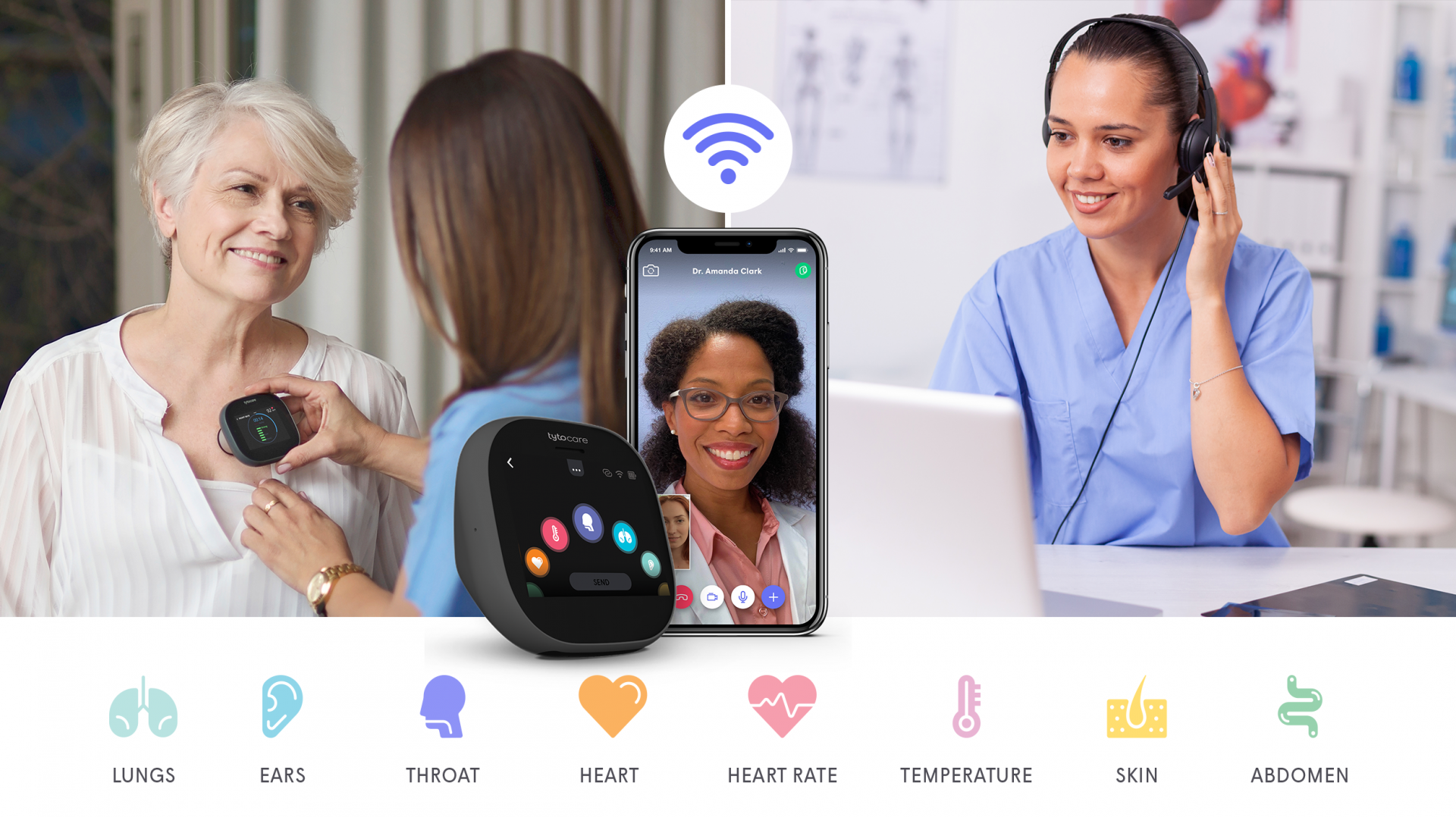Posted on: 1 July 2021
The Affinity Care (South) Primary Care Network has enhanced care for patients receiving home visits from their GP practice through the use of a digital telehealth solution called TytoCare.
 Tytocare is a handheld examination device linked to a digital platform which is being used by the Affinity Care (South) Home Visiting Hub. Using the device makes it possible to capture enhanced clinical observations and carry out high-quality video consultations between a healthcare professional with the patient in their home and a GP or nurse back at the GP practice.
Tytocare is a handheld examination device linked to a digital platform which is being used by the Affinity Care (South) Home Visiting Hub. Using the device makes it possible to capture enhanced clinical observations and carry out high-quality video consultations between a healthcare professional with the patient in their home and a GP or nurse back at the GP practice.
Since the onset of the pandemic, Yorkshire & Humber Academic Health Science Network (AHSN) has worked with several healthcare organisations such as the Affinity Care (South) Primary Care Network to help facilitate the adoption of TytoCare.
Kate Lodge, Head of Strategic Partnerships at Yorkshire & Humber AHSN, comments:
“Healthcare staff are under incredible pressure and the increasing backlog of patients waiting to be seen is only adding to the challenges staff are already experiencing. Our role is to identify innovations that can improve patient care while supporting the work of frontline staff by helping the spread and adoption of solutions like TytoCare. We have seen huge clinical interest in this innovation and have been delighted to work with the Affinity team on this”.
The Home Visiting Hub, led by Dr Sam Lyles, was set up to improve the responsiveness and quality of care for housebound patients in the Affinity Care (South) region which covers GP practices in the Clayton, Wyke, Thornton and Queensbury areas of Bradford. Many of these patients are older people with complex needs.
Dr Sam Lyles explains:
“Requests for home visits are now managed by a central, multidisciplinary team to enable us to better manage the rising demand for home visits. A GP or Advanced Nurse Practitioner first reviews the patient over the phone. If required, a healthcare professional from the practice then visits the patient and captures observations. Back at the practice the GP or nurse will review the observations to agree a care plan with the patient.”
Visits are now no longer limited to the traditional lunchtime period and can happen throughout the day.
Siam Murtaza, Healthcare Assistant says that TytoCare has transformed their ability to capture clinical observations with the patient:
“Previously, we had to rely on mobile phones to communicate with practice colleagues and were limited to basic observations like blood pressure, temperature and blood oxygen levels. That’s all changed with TytoCare and we hope that the solution will benefit around 60 patients every week.”
Using TytoPro™ means that additional observations such as high-quality images of the throat, ear drum and skin along with chest sounds, heart sounds and temperature can all be captured by the healthcare assistant at the patient’s home. The TytoCare digital platform also enables a live video link to the GP or nurse in the practice so that they can see and talk to the patient and the healthcare professional in their home.
Caroline Hill, Advance Nurse Professional, said:
“Capturing better information provides an enhanced assessment of a patient’s condition so that we can make more informed and efficient clinical decisions. The experience for the patient is also improved as they receive prompt, high quality care from the comfort of their home.”
The Home Visiting Hub will pilot TytoCare initially until the end of April 2022 to evaluate the impact of the solution for patients, carers and staff.
-ends-

